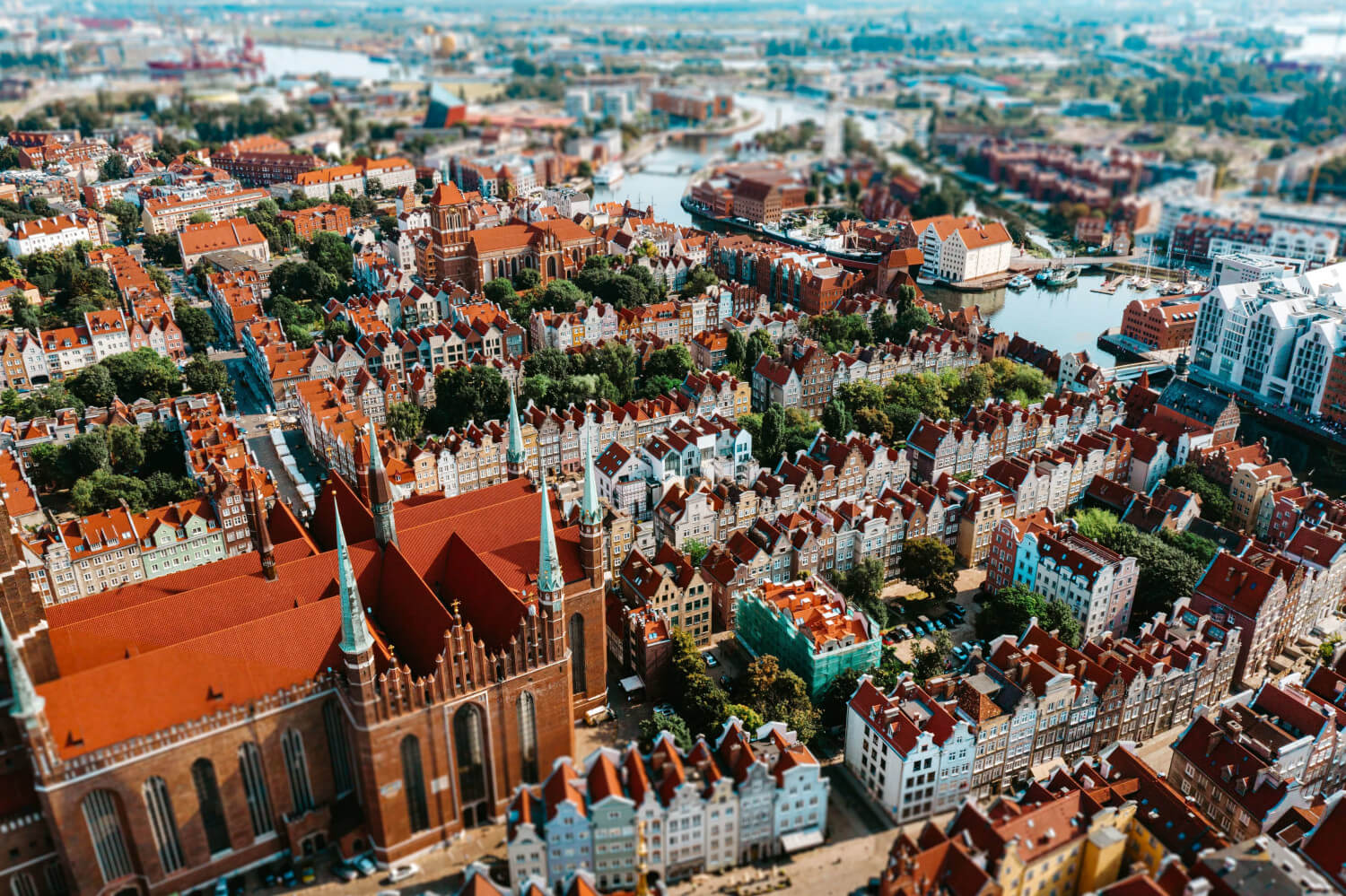Gdansk
Location: The pilot is implemented in the Gdansk University of Technology Campus, near to the city of Gdansk.
Context: Gdansk is a medium-size city with ~462,000 inhabitants on the Baltic coast of northern Poland. Poland is not highly populated and the region outside of Gdansk metropolitan area has minor towns in the vicinity such as Gdynia and Sopot ( with a greater metropolitan population of ~1.5 M inhabitants).
Climate: Moderately low temperatures during winter and regular rain fall events over the course of the year of varying intensity.
Typology: Rain garden for stormwater retention and treatment
Description:
In the first stage, as part of the procurement stage, the rain garden design has been defined with a specific company that included the scientifical design recommendations provided by the Gdansk Technological University team, partners in the NICE Project and leading this pilot. The construction of the facility was completed in July 2023. Currently, the UrbanRealLab (URL) pilot 9 is working. Also the samples are collected to determine the effectiveness of the facility's operation.
URL 9 retention facility is able to collect rainfall from local catchment area in an estimated amount of approximately of 11.4 m3. The facility includes rainwater and snowmelt flow route, that consists of:
- runoff collection system from hardened surface of the entrance to the campus, by lowering a curb over a distance of 2 m and construction of speed bump made of concrete cubes with dimensions of 5.6 m x 1.2 m x 0.07 m;
- sedimentation tank (ST) sealed with bentonite mat, with planted slopes. The sedimentation tank consists of two parts: ST1.1 with depth of 0.35 m and ST1.2. with depth of 0.55 m. The runoff is directed to the sedimentation tank through open channel, reinforced with granite cubes (placed on a 10 cm layer of a lean concrete). The bottom of the sedimentation tank and part of the slopes were also paved with granite cubes;
- three filtration segments (FS) with gravity flow, where FS 1 is filled with washed gravel with a grain size of 2-8 mm, FS 2 is filled with biochar with a grain size of 2-8 mm and FS 3 is filled with substrate provided by Funke. The filtration segments were positioned with a slope of 2% towards the rain garden (RG). In case of overflow of the settling tank ST1.2, the water will flow through the emergency overflow (in the form of reinforced channel) to the rain garden (RG1). Filter materials separators will be specially designed and made of oak wood to ensure tightness.
- basins planted with water-loving greenery, ensuring water retention and natural infiltration. The construction did not interfere with the existing layers of soil below the plant vegetation zone;
- drainage of excess rain and snowmelt water to the adjacent green area.
Main Technological innovation:
- An area of innovation for this pilot is the use of an adsorbant material. It serves as flooding mitigation and stormwater cleaning.
- It combines several stages: a filter, a sedimentation tank and finally the bioretention system itself.
- This altogether helps to extend the lifespan of this typology by avoiding problems of clogging among others.
- It utilises endemic species and a real setting, enabling demonstration of effectiveness of the typology under real stormwater and snow melt conditions.
Synergies:
- Adsorbant material that has been tested by CETIM

NICE Urban Real Labs are Nature-based Solutions (NbS) designed and implemented in locations with challenging geographical, environmental and socioeconomic characteristics. Their purpose is to increase the availability of solutions that contribute with water circularity in urban areas. NICE Urban Real Labs cover a wide range of climate zones, including a) Tropical and Subtropical (Pereira and Turin), b) Mediterranean (Algeciras, Benalmadena, Cairo), c) Oceanic (Aarhus), d) Continental (Talavera and Madrid), e) Baltic (Gdansk) and f) transitional between temperate and moderately Continental and Mediterranean (Lyon).

This project has received funding from the European Union's Horizon 2020 research and innovation programme under grant agreement No.101003765.
